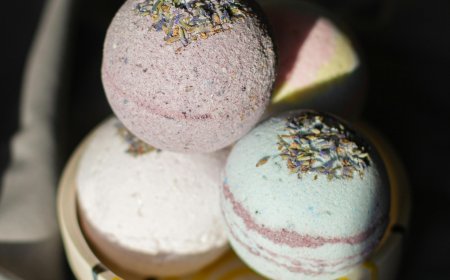"Seasonal Skincare Tips: Adjusting Your Routine for Changing Weather"
Changing seasons can have a significant impact on your skin’s needs and behavior. As the weather shifts from warm to cold or from humid to dry, your skincare routine should adapt to ensure your skin remains healthy, hydrated, and protected. This guide offers practical tips for adjusting your skincare routine according to the seasons to keep your skin looking and feeling its best all year round.

Spring Skincare
1. Exfoliate Regularly: Spring is the perfect time to shed the dry, dead skin cells accumulated during the winter months. Use a gentle exfoliator to refresh your skin and promote cell turnover. Opt for products with alpha hydroxy acids (AHAs) or beta hydroxy acids (BHAs) for a bright and smooth complexion.
2. Lighten Up: As the weather warms up, switch to lighter, hydrating moisturizers and serums. Gel-based moisturizers can provide hydration without feeling heavy or greasy. Look for products with ingredients like hyaluronic acid or glycerin to keep your skin plump and hydrated.
3. Refresh with Sunscreen: With increased sun exposure, it's essential to use a broad-spectrum sunscreen with at least SPF 30 daily. Choose a lightweight, non-comedogenic formula that won’t clog pores, especially if you have oily or acne-prone skin.
4. Manage Allergies: Spring often brings allergens like pollen, which can irritate your skin. Consider using products with anti-inflammatory ingredients like chamomile or green tea to soothe and calm any irritation.
Summer Skincare
1. Stay Hydrated: Hot and humid weather can lead to dehydration. Drink plenty of water and use hydrating skincare products. Opt for a hydrating mist or spray that you can carry with you for a refreshing boost throughout the day.
2. Control Oil and Shine: Summer can increase oil production and lead to shiny skin. Use oil-free, mattifying products and consider incorporating a gentle exfoliating scrub or clay mask once a week to keep excess oil in check and prevent clogged pores.
3. Protect and Prevent: Reapply sunscreen every two hours when exposed to the sun, and especially after swimming or sweating. Use a broad-spectrum sunscreen with higher SPF for extra protection. Don’t forget to apply sunscreen to all exposed areas, including ears and the back of your hands.
4. Address Sun Damage: Incorporate products with antioxidants like vitamin C or niacinamide into your routine to combat sun damage and brighten your complexion. These ingredients can help reduce hyperpigmentation and even out skin tone.
Fall Skincare
1. Hydrate Deeply: As temperatures begin to drop, switch to richer moisturizers to combat the loss of moisture in the air. Look for products containing ceramides, fatty acids, and hyaluronic acid to restore and lock in hydration.
2. Repair and Rejuvenate: Fall is a great time to focus on repairing any summer damage. Consider using products with retinol or alpha hydroxy acids (AHAs) to boost cell turnover and fade any sunspots or uneven skin tone.
3. Gentle Exfoliation: Adjust your exfoliation routine to prevent over-exfoliation, which can lead to dryness and irritation. Opt for a milder exfoliant and use it less frequently to avoid disrupting your skin’s natural barrier.
4. Prep for Winter: Begin preparing your skin for the colder months by incorporating richer, more nourishing products. Start using heavier creams and oils that will help strengthen your skin's barrier and prepare it for the harsh winter weather.
Winter Skincare
1. Intensify Hydration: Winter’s cold and dry air can sap moisture from your skin. Use thick, emollient creams and oils to provide intense hydration. Look for products containing ingredients like shea butter, squalane, and ceramides to restore and lock in moisture.
2. Avoid Hot Water: Hot showers and baths can strip your skin of its natural oils. Opt for lukewarm water instead and limit your time in the shower. Follow up with a rich moisturizer immediately after to seal in hydration.
3. Protect Your Skin: Wind and cold temperatures can damage your skin. Wear protective clothing like scarves and gloves, and apply a barrier repair cream or balm to exposed areas to prevent chapping and dryness.
4. Address Dryness and Irritation: Use gentle, hydrating cleansers and avoid products with harsh ingredients or strong fragrances that can exacerbate dryness and irritation. Incorporate a hydrating mask into your routine once or twice a week for an extra moisture boost.
Conclusion
Adapting your skincare routine to the changing seasons is essential for maintaining healthy, radiant skin year-round. By understanding how seasonal weather impacts your skin and adjusting your products and habits accordingly, you can address specific skin concerns and keep your complexion looking its best in every season. Remember to listen to your skin's needs and make changes as necessary to ensure it remains balanced, hydrated, and protected throughout the year.
What's Your Reaction?























































































